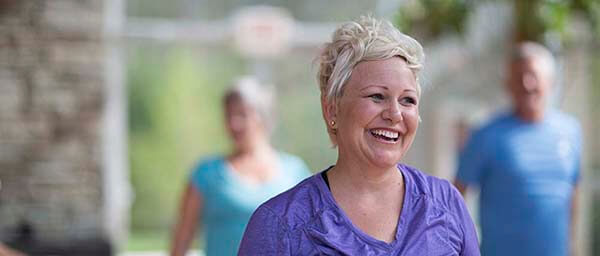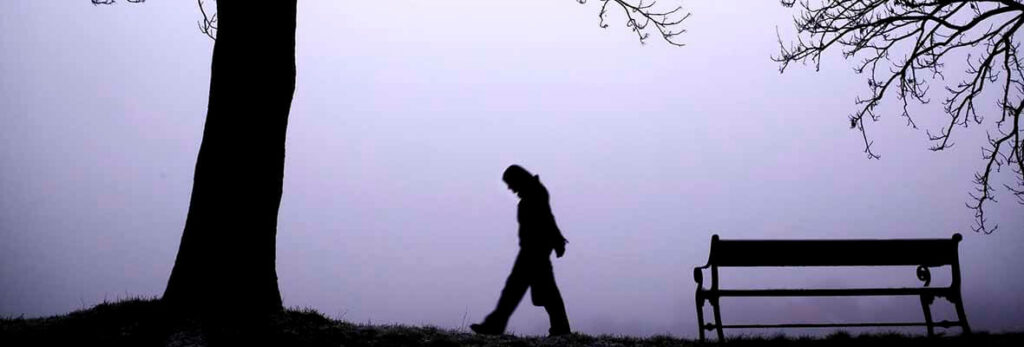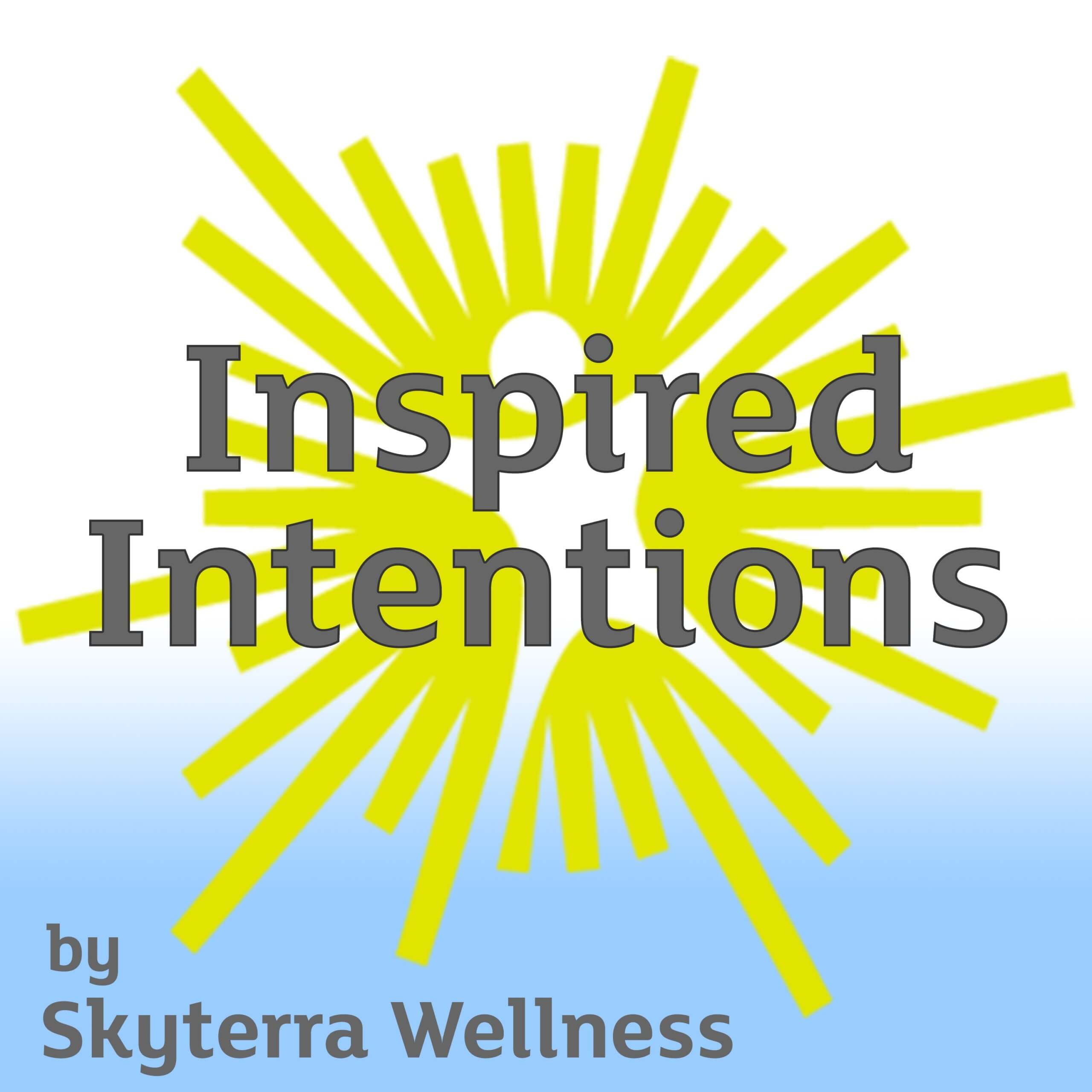Feeling the winter blues? Down in the dumps? Stressed out about the holidays? For some people the winter truly does impact their mood. However, there are some things you can do about it.
In the northern hemisphere, the autumnal equinox marks the official change from summer to fall. Days get shorter, nights get longer, and temperatures drop. Kids go back to school, traffic goes back to its typical patterns, and everywhere people settle in for the long haul to spring. By the time Halloween rolls around, it’s cold out—unless you live in the Southwest, of course—but even there, the days get shorter and the nights get chilly. A week after trick-or-treating, the time changes. We fall back. Some of us fall back to things we love: comfy sweaters, evenings by the fire, early sunsets, and the invigorating feel of crisp morning air. Autumn hues bring fond memories. The reds, yellows, and oranges of the changing leaves mean Thanksgiving is right around the corner. Which means Christmas, Hanukah, Kwanzaa, and the winter solstice are not too far off. Some of us love the December holidays, and eagerly anticipate their arrival every year. Some of us, though, fall back into patterns that aren’t so cheery. Shorter days, longer nights, and cooler temperatures don’t evoke happy thoughts—they’re a harbinger of the winter blues.
Winter blues. It’s such an easy phrase to bandy about. It sounds like it comes from song, or something you might say to a child who’s feeling a little down in the dumps because they can’t play outside as much as they’d like. But for millions of grown adults, the winter blues are no joke. They’re very real. So real psychiatrist Norman Rosenthal described them in a paper in 1984 and coined a term that doesn’t trivialize the phenomenon: Seasonal Affective Disorder, a.k.a. SAD.
The Diagnostic and Statistical Manual of Mental Disorders, 5th Edition (DSM-5), identifies SAD as a sub-category of depression: it’s a depressive state that flares up in a particular season and remits when the season ends. The Mayo Clinic defines it as “a type of depression that’s related to changes in seasons.” Statistics show full-blown SAD affects 6% of the U.S. population, while minor SAD affects 14%.
Note: A small number of people get summer SAD, but for the purposes of this article, we’ll use the term SAD only as it applies to winter.
Signs and Symptoms of SAD

If you struggle with bouts of depression every winter but write them off as no big deal, it’s understandable. Many people tell themselves things like “I’m just a sunlight kind of person,” or “Winter gets me down,” or “Cold weather and I are not friends.” Fair enough: you may have minor SAD, which is a relatively simple thing to deal with. However, if you get truly sad—as in full-on depressed—every single winter and it doesn’t go away until springtime, there may be more to it than you think. We admire you for putting a happy face on things and keeping perspective, but it’s important to understand you’re not alone—and you can do something about it.
Use the following check-list if you think you might suffer from SAD. When winter comes, do you:
- Feel more irritable than usual?
- Feel tired or have less-energy than usual?
- Have increased problems with interpersonal relationships at home or at work?
- Become hypersensitive to rejection?
- Feel like your arms and legs are heavy?
- Sleep more than usual?
- Experience changes in appetite?
- Crave high-carb food?
- Gain weight?
If you answered yes to any of the above, it’s time to consider whether or not your winter blahs are more than just an aversion to short days, long nights, and cold temperatures. In addition to this checklist, it’s wise to examine your seasonal moods if you fall into any of the following at-risk categories:
- SAD is more prevalent in women than men, but men may suffer more extreme symptoms than women.
- The younger you are, the more likely you are to have SAD.
- SAD is more common in people who have family members with SAD or other forms of depression.
- Diagnosed emotional disorders.People diagnosed with bipolar disorder or depression are more likely to have SAD.
- It appears that the further away from the equator you live, the more likely you are to have SAD. Experts theorize this is due to the relative lack of sunlight over the course of the year.
Loneliness, Loss, and Family Challenges
SAD can also affect people who don’t really fit into any of the typical at-risk categories and don’t answer yes to the questions on the checklist. Winter and the December holidays can be tough for many reasons. Sadness, loneliness, and melancholy are not at all unusual for those who are divorced, empty-nesters, widows/widowers, or live alone for whatever reason. The holidays can also hit hard if you’ve recently—or not so recently—suffered the loss of a loved one. The smallest thing can trigger tears. From decorations in stores to a favorite holiday movie to an office party, any reminder can foreground the loss and remind you of your dearly beloved.
And let’s not ignore the elephant in the room, either: some of us simply have a tough time getting along with our families. We’re supposed to love them unconditionally and look forward to the big gatherings and family meals, which confounds things further. We may wrestle with guilt over not wanting to spend time with our parents, aunts, uncles, siblings, or cousins. In reaction to this guilt, me might become depressed, angry, anxious, have one drink too many, or overeat—none of which help us in the least.
Take heart, though. There are tried and true ways to handle SAD, The Winter Blues, or a basic case of the holiday blahs. You don’t have to grind your teeth and wait for March. You can take proactive steps to make sure this winter is your best one yet.
Five Ways to Beat SAD
The most common, think-inside-the-box therapies for treating SAD are Light Therapy, Cognitive Behavioral Therapy, and Medication. But since when have you read a Skyterra article that urges you to think inside the box? Here are five things you can do yourself that are guaranteed to help alleviate SAD:
- Get Plenty of Light: On the most basic level, SAD happens because of a lack of sunlight. Sure, you can go to a psychiatrist and get light therapy, but you can also do some simple things around the house to make sure you get as much sunlight as possible. Keep your blinds open, prune trees or bushes that may block light from making it inside, sit next to a window for your morning coffee, or take an outdoor walk after lunch.
- Get More Exercise: Physical activity and a regular exercise routine relieve stress and improve well-being, and promote all-around emotional health. Exercise also boosts your immune system and keeps your body strong. Sticking to your workout plan through the winter will give you a sense of accomplishment that makes you feel great. Come New Year’s Resolution time, you can resolve to increase—rather than restart—your fitness plan.
- Get Out in The Great Outdoors: The best source of healing light is the sun. And the best place of all to recharge, get connected, and reset your systems is the great outdoors. Take walks in your neighborhood, in a park, or take a short drive out of town to get away from the hustle and bustle of the city. Plan a Saturday hike or a nice long bike ride. Don’t worry about the temperature: bundle up. Once you get moving, you’ll most likely shed the hat, open up your jacket, and appreciate the invigorating feel of the crisp, cold air.
- Get Plenty of People Time: If you know you’re predisposed to isolating yourself during the winter, take steps now to make sure you don’t. Listen: you’re not a bear. You don’t need to crawl into a cave and hide from November to March. Call friends, connect with loved ones, go to the parties you’re invited to, do lunch—just be around people. You don’t have to get deep and have big conversations (although talking helps!) but being around people can make all the difference. Sometimes a joke and a smile is all it takes.
- Get out and Go Travel: Plan a vacation where you get more outdoors time, book a weekend getaway, or arrange a trip to visit old college friends you haven’t seen in years. Go for that adventure vacation you’ve always wanted to try but were too timid to actually do.
A Winter Holiday at Skyterra
 You can work all five strategies into your schedule—or you can take an all-of-the-above approach and book a trip to Skyterra this winter. A stay with us ticks the five boxes: you’ll get all the natural light you’ll ever need, world-class exercise programs designed and taught by professional instructors, time to explore the breathtaking Blue Ridge Mountains of North Carolina. You’ll experience compassion, empathy, and camaraderie with our amazing staff and your fellow guests, and get much-needed time away from your typical daily routine. The funny thing is, when we sat down to write this article on SAD, we kept coming across the same lifestyle recommendations over and over. Exercise, travel, light, nature, people. We checked and double-checked, then realized one simple fact: Skyterra is the perfect remedy for SAD. You can time your trip any way you like: early in the season if you already have holiday commitments, smack-dab in the middle of the season to keep you on track, or late in the season as a safety net or release valve.
You can work all five strategies into your schedule—or you can take an all-of-the-above approach and book a trip to Skyterra this winter. A stay with us ticks the five boxes: you’ll get all the natural light you’ll ever need, world-class exercise programs designed and taught by professional instructors, time to explore the breathtaking Blue Ridge Mountains of North Carolina. You’ll experience compassion, empathy, and camaraderie with our amazing staff and your fellow guests, and get much-needed time away from your typical daily routine. The funny thing is, when we sat down to write this article on SAD, we kept coming across the same lifestyle recommendations over and over. Exercise, travel, light, nature, people. We checked and double-checked, then realized one simple fact: Skyterra is the perfect remedy for SAD. You can time your trip any way you like: early in the season if you already have holiday commitments, smack-dab in the middle of the season to keep you on track, or late in the season as a safety net or release valve.
You decide what’s best—and we’ll be here for you!








